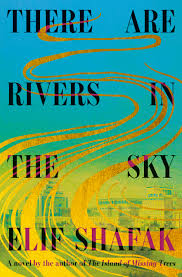Dedication
byDedication to understanding the intricate relationship between women and fiction marks the opening of this insightful chapter. The writer, when approached to comment on the topic, refuses to offer a standard or expected response. Instead, they find solace by the riverbank, taking time to reflect on the meaning of these words, allowing contemplation to take precedence over a hurried response. This thoughtful approach to the question of women and fiction introduces readers to the complex relationship between women and literature, preparing them for a deeper dive into the roles women have historically played in shaping stories, and how they continue to influence the literary world today.
The riverside setting where this reflection takes place is rich with symbolism. Nature, in its tranquil and unhurried flow, becomes an apt metaphor for the depth and thoughtfulness needed when approaching such an important and multifaceted topic. The river’s calm yet determined movement mirrors the unspoken persistence of women throughout history, whose voices have often been silenced, yet who continue to endure and evolve within the confines of societal expectations. The writer’s time alone by the water invites readers to join in the introspection and to consider how the representation of women in literature has been shaped by external forces, and how these portrayals often mirror the struggles faced by women in real life.
As the writer reflects, the chapter foreshadows a discussion of the different roles women have occupied throughout literary history. More than just being the objects of stories, women have also been the architects of narratives, shaping the course of literature with their voices and ideas. This thought-provoking shift in perspective invites readers to think not only about the roles women play in fiction but also about the challenges they face in creating fiction. Historically, women have been marginalized in the literary world, often having to fight for recognition and respect. The chapter promises to unpack the way women’s contributions have reshaped the literary canon, pushing past gendered boundaries to assert their rightful place in the storytelling tradition.
This initial reflection serves as a profound invitation to the reader to engage in a larger conversation about the societal expectations placed on women both within literature and in the real world. Through this exploration of gender, the chapter opens the door to understanding how literature has reflected and, at times, reinforced the marginalization of women. However, it also highlights the agency of female writers, whose resilience and creativity have allowed them to carve out spaces for their voices to be heard. The journey promised in the rest of the chapter will delve deeper into how female writers have used their work to challenge social norms, create new narratives, and question longstanding assumptions about gender and storytelling.
In a world where women’s stories have often been relegated to the background or minimized, this chapter urges readers to reconsider the value and power of women’s voices in literature. The writer’s pause by the river encourages us to look beyond surface-level narratives and instead examine the ways in which female authors have subtly and powerfully shaped the very stories we tell. By reflecting on the quiet yet enduring impact of these authors, readers are prompted to appreciate the deeper layers of storytelling and the transformative power of women’s contributions to the literary world. The chapter thus prepares the audience for a broader exploration of identity, representation, and the role of women in creating the stories that define us.
Ultimately, the chapter sets the stage for an exploration of the gendered dynamics within literature, suggesting that the act of storytelling is both a personal and a collective process. Through introspection, the writer invites the reader to reflect on how women have been portrayed in fiction, both as characters and as authors, and how their representation has changed over time. This chapter, which begins with a quiet moment of reflection by the river, opens the door to a deeper understanding of women’s place in literature and encourages a thoughtful dialogue about the intersection of gender, identity, and storytelling. The reflection on the complexities of “women and fiction” sets the tone for an ongoing conversation about the importance of gender equality in literature and the power of narrative to shape society.

